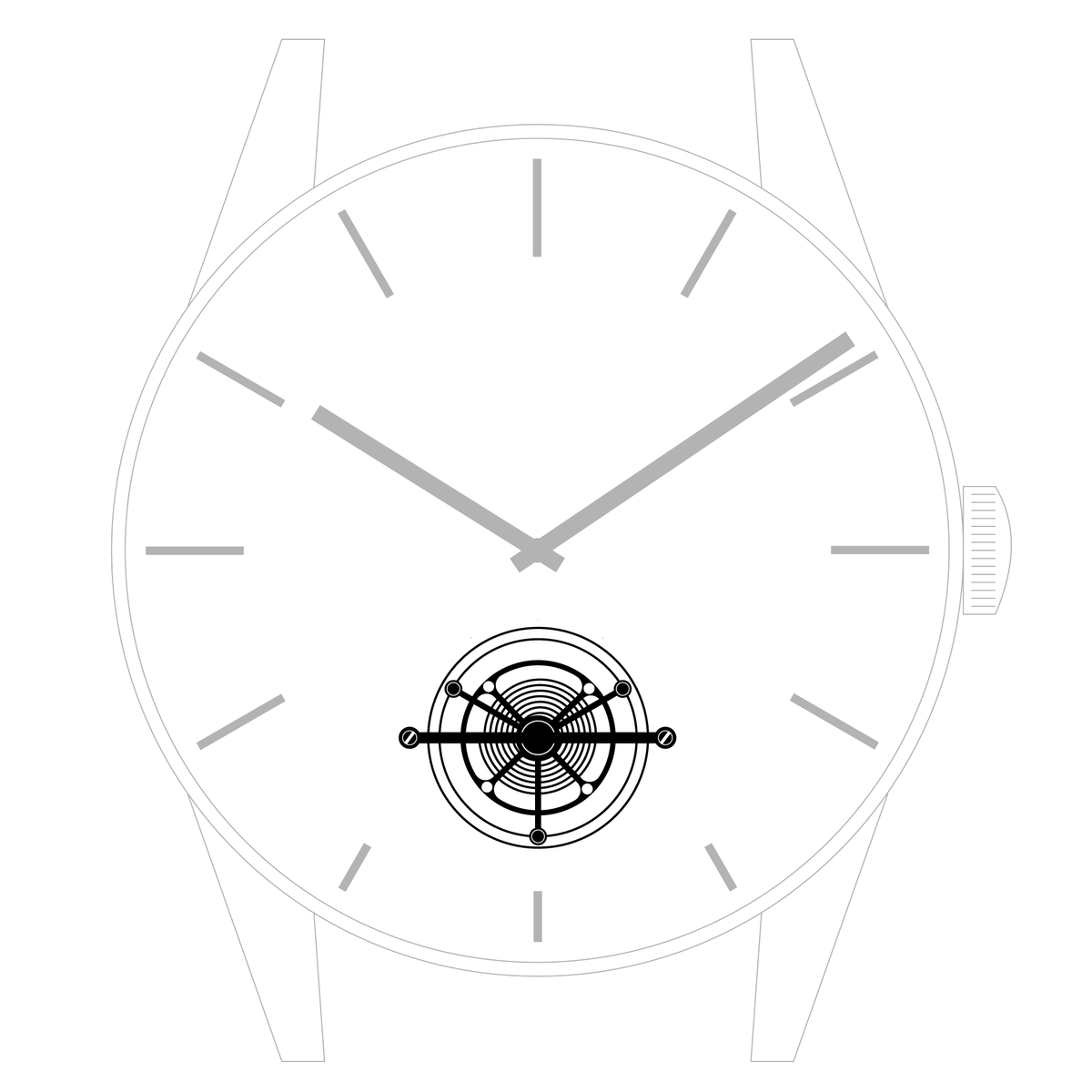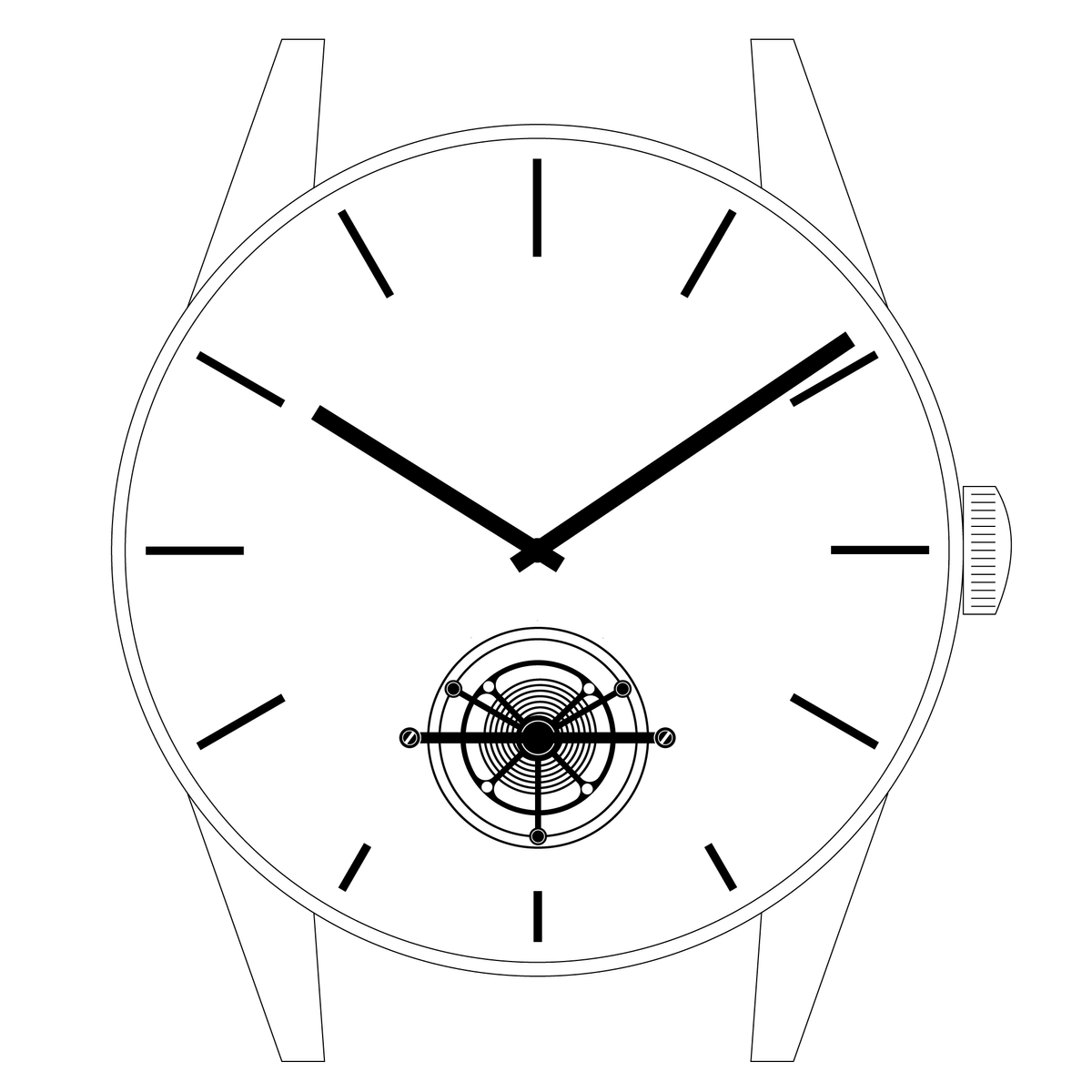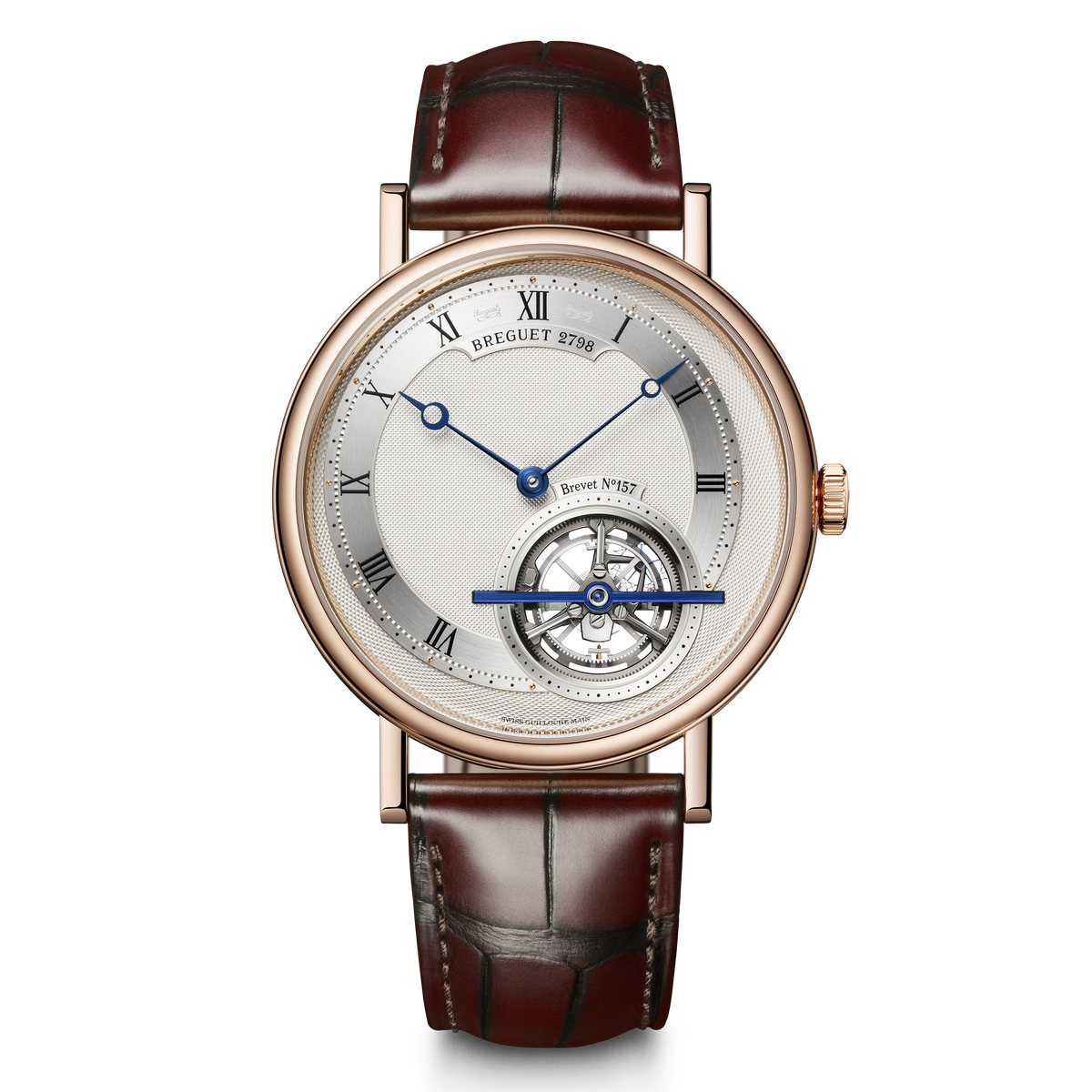It was not until 1981 that a further significant breakthrough occurred: that was the year that Englishman Derek Pratt, who specialized in the restoration of historical clocks and complicated watches, built a constant-force tourbillon watch for Urban Jürgensen. The first of its kind, this model featured a remontoire integrated within the cage (see: Constant-force escapement). In 1986, Maurice Grimm and André Beyner developed the first self-winding wristwatch equipped with a tourbillon, for Audemars Piguet. The model caused a sensation due to the thinness of its case (2.5mm) and above all the positioning of its tourbillon, appearing at 11 o’clock on the dial.
This accomplishment put the tourbillon firmly back in the spotlight. From then on, Breguet’s invention was to prove an enduring source of fascination for connoisseurs. On some models, it appeared as a solo star, such as the Tourbillon 8 jours by Blancpain (1991), on Omega’s Central Tourbillon 1994), the Automatic Tourbillon with Three Gold bridges and platinum micro-rotor by Girard-Perregaux (1999), and the Vacheron Constantin Patrimony Traditionnelle 14-day Tourbillon equipped with four barrels stacked in pairs. On others, it was associated with other complications, as in the Grande sonnerie and Westminister chime with minute repeater, tourbillon, perpetual calendar, dual-time display and power-reserve indicator, by Gérald Genta (1994); or the Tour de l’Île by Vacheron Constantin featuring a minute repeater and striking mechanism torque indication, tourbillon, perpetual calendar, phases and age of the moon, perpetual equation of time, sunrise and sunset times, sky chart in a given location, dual-time and power-reserve displays (2005)



